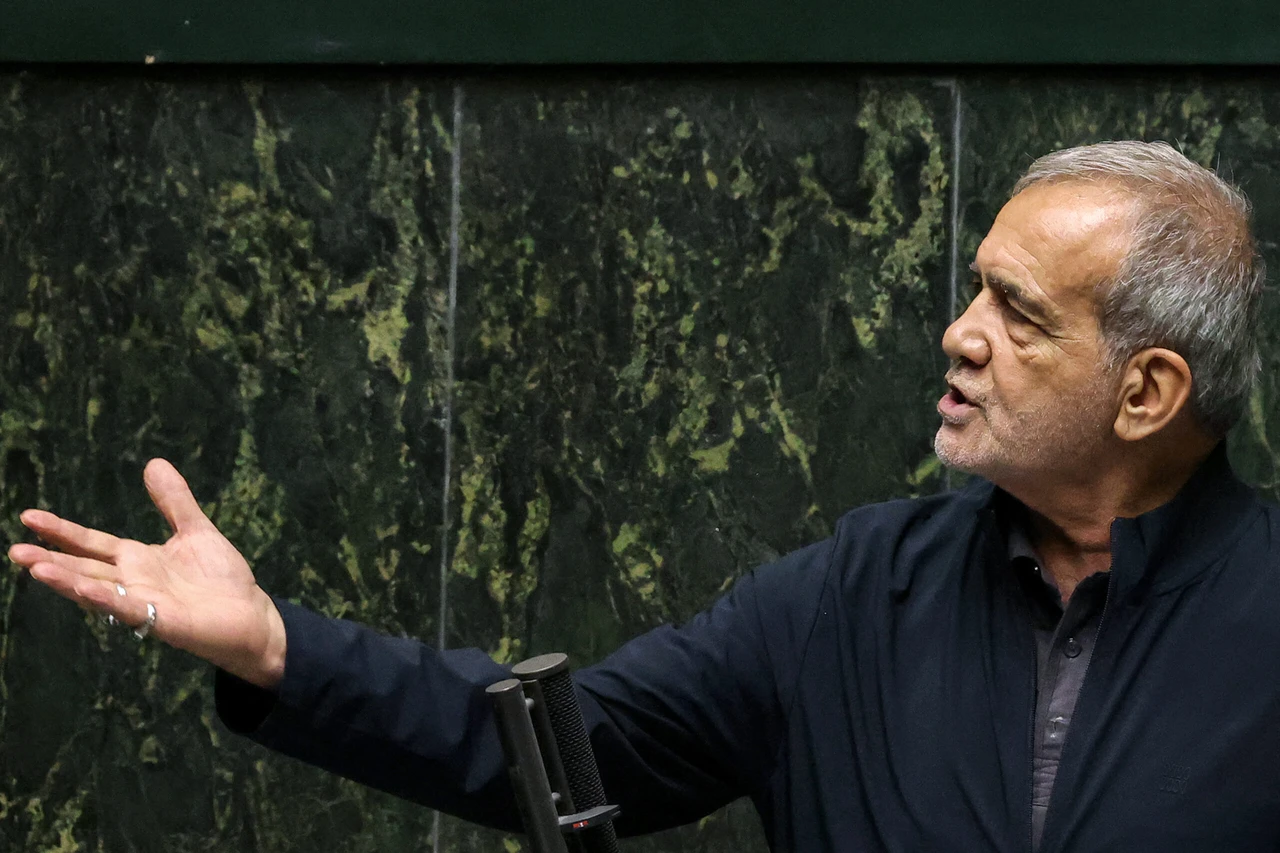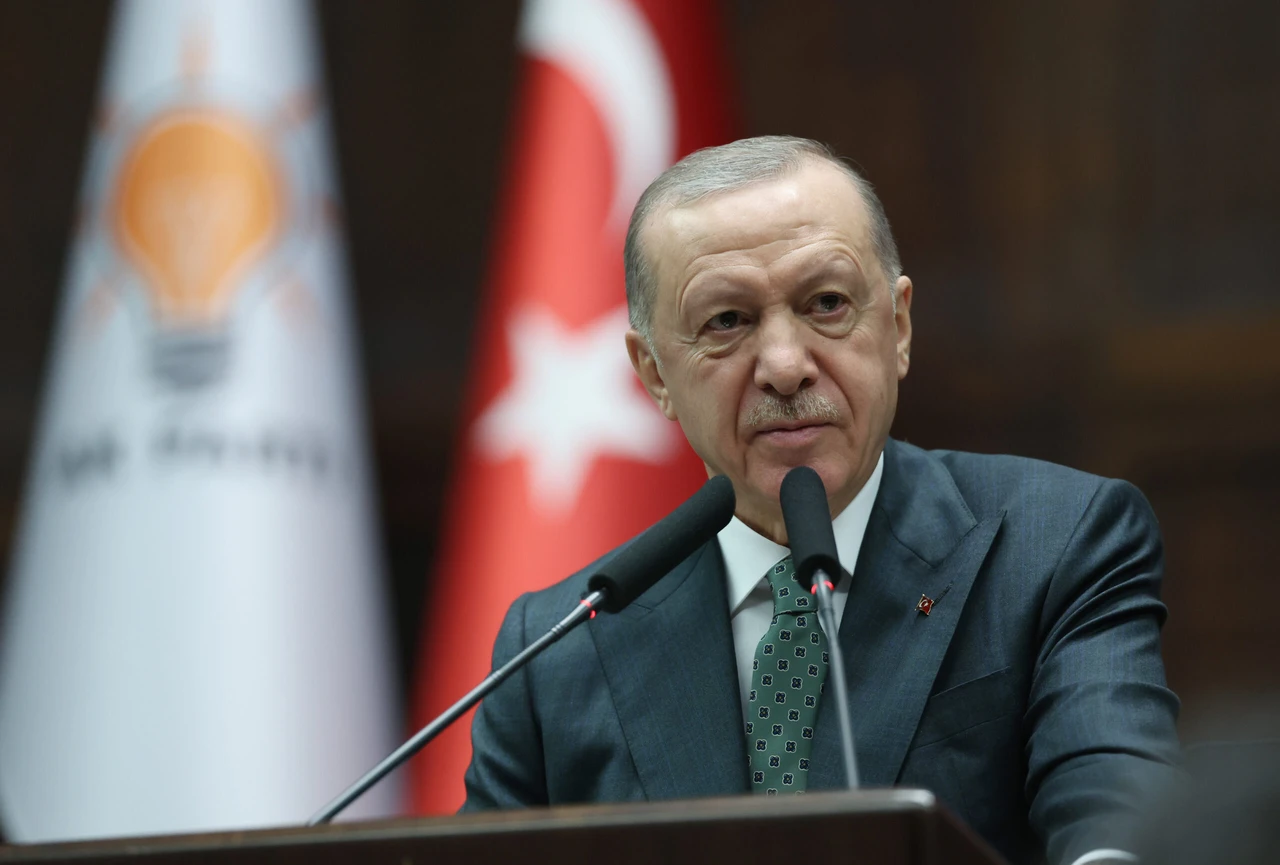Shia-majority Iran appoints first Sunni Vice President for Rural Development
 Iran's President Masoud Pezeshkian addresses parliament during a session to approve his new cabinet appointments in Tehran on August 21, 2024. (AFP Photo)
Iran's President Masoud Pezeshkian addresses parliament during a session to approve his new cabinet appointments in Tehran on August 21, 2024. (AFP Photo)
In a historic move, Iranian President Masoud Pezeshkian on Monday named Abdolkarim Hosseinzadeh, a politician from the Sunni minority, as vice president for rural development, state media reported. This appointment marks a rare instance of Sunni representation in a top government role within a predominantly Shia country.
“By decree, the president designated Abdolkarim Hosseinzadeh to the post of vice president in charge of rural development and disadvantaged areas of the country because of his valuable experience,” stated the presidential website.
Sunni Muslims make up about 10 percent of Iran’s population, where Shia Islam is the official state religion. Since the Islamic revolution of 1979, Sunnis have seldom held key positions of power, making Hosseinzadeh’s appointment significant.
Hosseinzadeh, 44, has represented the northwestern cities of Naghadeh and Oshnavieh in the Iranian parliament since 2012. A reformist, he has advocated for Sunni rights and publicly defended their representation in the country.
Despite Pezeshkian’s campaign promises to increase Sunni involvement in senior government roles, their presence in the cabinet remains minimal. Hosseinzadeh’s appointment could signify a step toward fulfilling these promises, though many remain skeptical.
Historically, Sunni representation in Iran’s executive branch has been sparse. The only consistent Sunni presence has been through advisory roles, such as the presidential adviser on Sunni affairs, held for years by Mohammad Eshaq Madani.
This position was later restructured under former President Hassan Rouhani and passed to a Shia cleric. Raisi’s government restored the position with the appointment of Abdul Salam Karimi, a Sunni cleric, yet Sunnis have often remained relegated to mid-level or local roles.
During the 2017 campaign, Pezeshkian acknowledged the dissatisfaction of Sunni communities, committing to address their concerns. Yet the exclusion of Sunnis from his cabinet raised doubts. He defended his decisions by emphasizing the importance of qualifications, yet noted that much of the power remains concentrated within certain factions.
Although Hosseinzadeh’s appointment is seen as progress, it remains unclear whether it will lead to broader Sunni representation in Pezeshkian’s administration. Sunnis have continued to push for leadership roles in government-affiliated organizations, embassies, and ministerial positions, yet these demands often go unmet.
In recent years, reformist presidents like Hassan Rouhani have made modest strides in including Sunnis in diplomatic roles. Notable appointments include Homeira Rigi, the first Sunni woman to lead an Iranian embassy, and Saleh Adibi, the first Sunni ambassador to Vietnam and Cambodia. However, these examples remain exceptions to the broader trend of limited Sunni representation.
With Hosseinzadeh’s appointment, hopes for greater Sunni inclusion have been reignited, though many continue to question whether this will lead to lasting change or merely serve as a symbolic gesture.
Sunnis constitute approximately eight to 10 percent of Iran’s population and hold 22 seats in the current parliament. However, the path to significant influence within Iran’s political landscape remains elusive.



